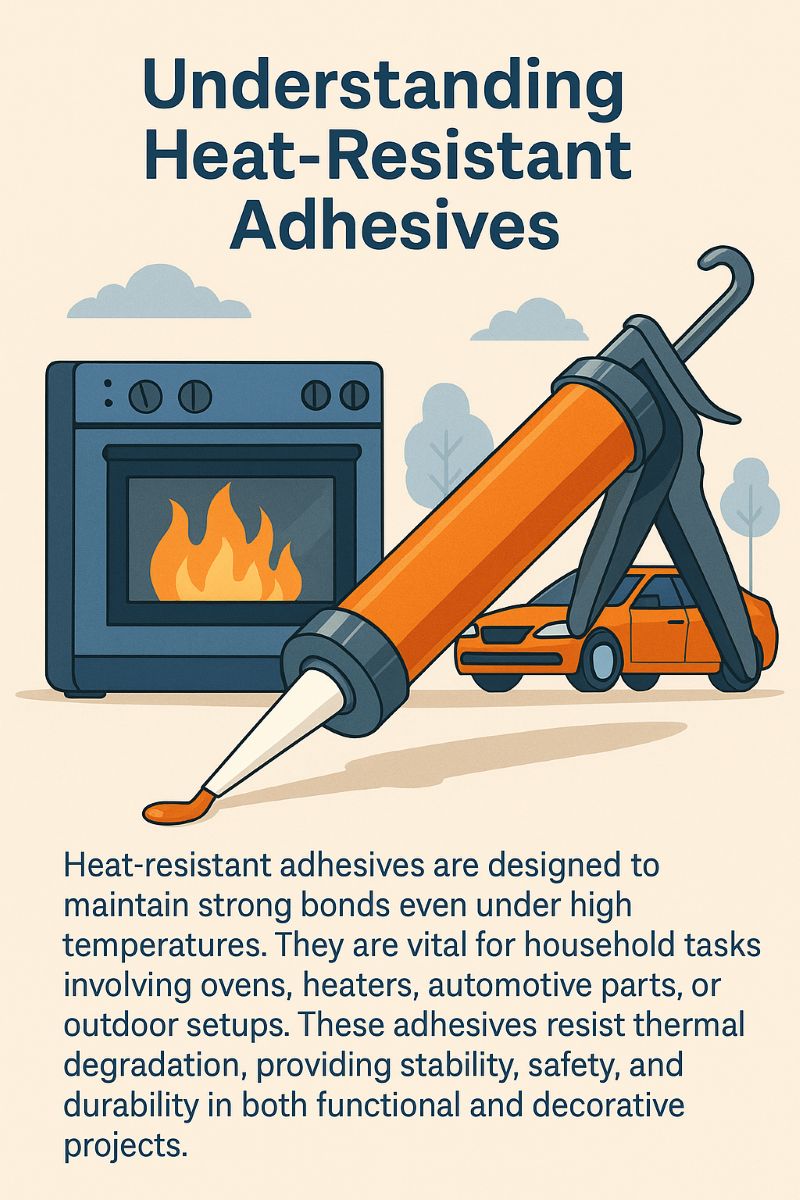
Understanding Heat-Resistant Adhesives
Types of Heat-Resistant Adhesives
Importance in Home DIY Projects
Application Methods and Techniques
Latest Trends in Adhesive Technology
Strategies for Best Results
Safety Considerations
Heat-resistant adhesives are designed to maintain strong bonds even under high temperatures. They are vital for household tasks involving ovens, heaters, automotive parts, or outdoor setups. These adhesives resist thermal degradation, providing stability, safety, and durability in both functional and decorative projects.
Different adhesive types are tailored for specific uses:
Epoxy-Based Adhesives: Great for bonding metals and heavy-duty repairs.
Construction Adhesives: Strong and flexible for general household surfaces.
Glass/Ceramic Adhesives: Transparent and heat-tolerant for smooth, hard surfaces.
Silicone Sealants: Elastic and resistant to both temperature and vibration, ideal for sealing applications.
Each adhesive type offers unique strengths depending on the material and thermal environment.
When working on home improvement tasks involving heat, the right adhesive ensures your project stays intact. Whether you're reattaching a handle to a hot appliance or building weather-resistant outdoor fixtures, heat-resistant adhesives maintain integrity where others fail. They also prevent structural failure and improve long-term reliability.
To ensure proper bonding:
Clean the surface thoroughly to remove dust, oil, or old adhesive.
Apply evenly using a spatula, brush, or caulking tool.
Follow the curing time provided in the product instructions.
Avoid disturbing the bond during the setting period.
Correct technique enhances bond strength, improves safety, and ensures your work lasts longer.
Innovations in adhesive materials are making home projects safer and more effective:
Eco-Friendly Adhesives: Reduce emissions and environmental impact.
Improved Temperature Range: Modern formulas tolerate higher fluctuations.
DIY-Friendly Packaging: Tubes, sticks, and pre-cut pads simplify usage.
Advanced Chemistry: Nanotechnology improves bonding strength and durability.
These developments are making high-performance adhesives more accessible to everyday users.
To get the best performance:
Choose the correct adhesive for the surface and heat level.
Read product instructions carefully and match them to your project’s needs.
Use tools for precision, especially on small or intricate repairs.
Let the bond cure fully before applying heat or stress.
These small adjustments can significantly improve the results and longevity of your work.
Always prioritize safety when working with adhesives:
Ventilation: Use in a well-ventilated area.
Protective Gear: Gloves and goggles are essential.
Storage: Keep adhesives away from heat and children.
Instructions: Always check for safety recommendations on the label.
Staying cautious ensures a safe, efficient, and rewarding DIY experience.